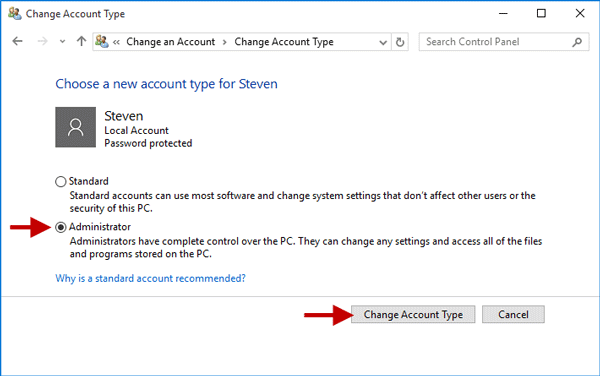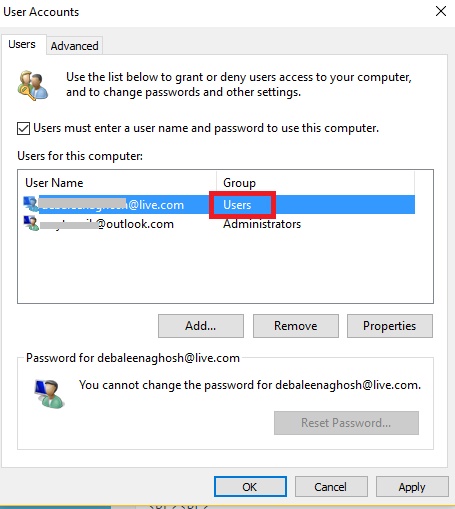
- #WINDOWS 10 ADMIN LOG INTO STANDARD ACCOUNTS INSTALL#
- #WINDOWS 10 ADMIN LOG INTO STANDARD ACCOUNTS WINDOWS 10#
Note: It is recommended that you try to turn a Standard User account into an Administrator account while logged into an existing Administrator account since most of the methods listed and described require administrative privileges.
#WINDOWS 10 ADMIN LOG INTO STANDARD ACCOUNTS WINDOWS 10#
The following are the four different ways you can go about turning a Standard User account on a Windows 10 computer into an Administrator account: If you want to give a Standard User account on a Windows 10 computer more autonomy and control over the computer, you need to turn it into an Administrator account, which is something that is definitely possible. Standard User accounts are extremely useful for when you need to create a user account for a child or for someone who cannot be trusted to not make a mess of things if given too much power but won’t fit the bill for someone who needs to have a significant amount of access to and control over a computer.

When you create a new user account on a Windows 10 computer, it is created as a Standard User account by default, although you can choose to turn it into an Administrator account while you create it. On older versions of Windows, another user account type known as “Guest” used to exist, but nothing of the sort exists on Windows 10. Changing the account type to administrator
#WINDOWS 10 ADMIN LOG INTO STANDARD ACCOUNTS INSTALL#
Standard User accounts, on the other hand, are relatively more limited in what they have control over – Standard Users can launch applications but not install any new ones, they can change settings but only as long as the settings they fiddle with don’t affect any other user accounts on the computer, and you need to type in the username and password for an Administrator account to get through any UAC prompts on a Standard User account on Windows 10.

The difference between these two user account types is not of functionality but of permissions and authority.Īdministrator accounts have complete autonomy and control over every single aspect of a Windows 10 computer – from changing computer settings for all user accounts on the computer and installing applications to getting through User Access Control (UAC), Administrator accounts can do it all. There are two different kinds of user accounts on Windows 10 – Standard User accounts and Administrator accounts.


 0 kommentar(er)
0 kommentar(er)
